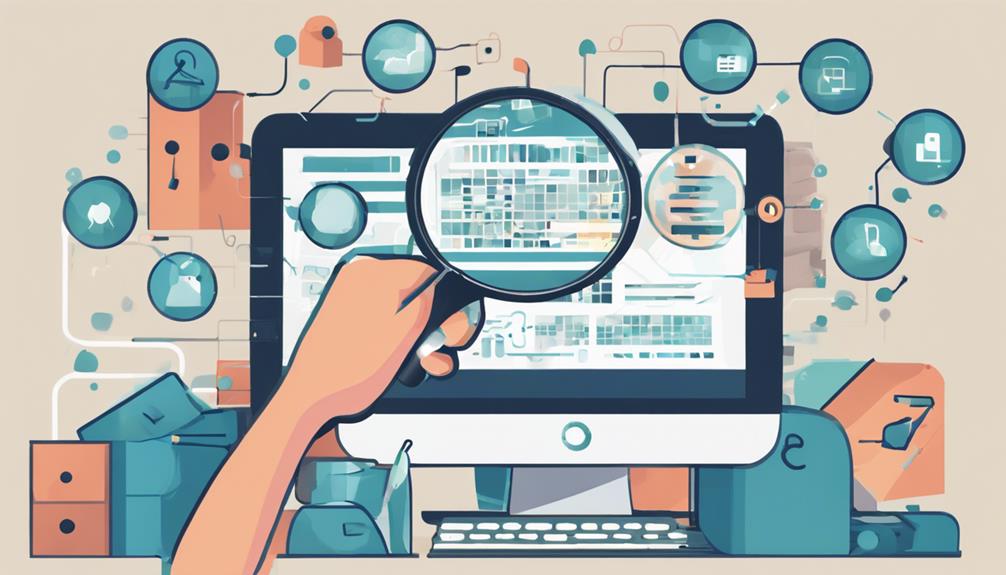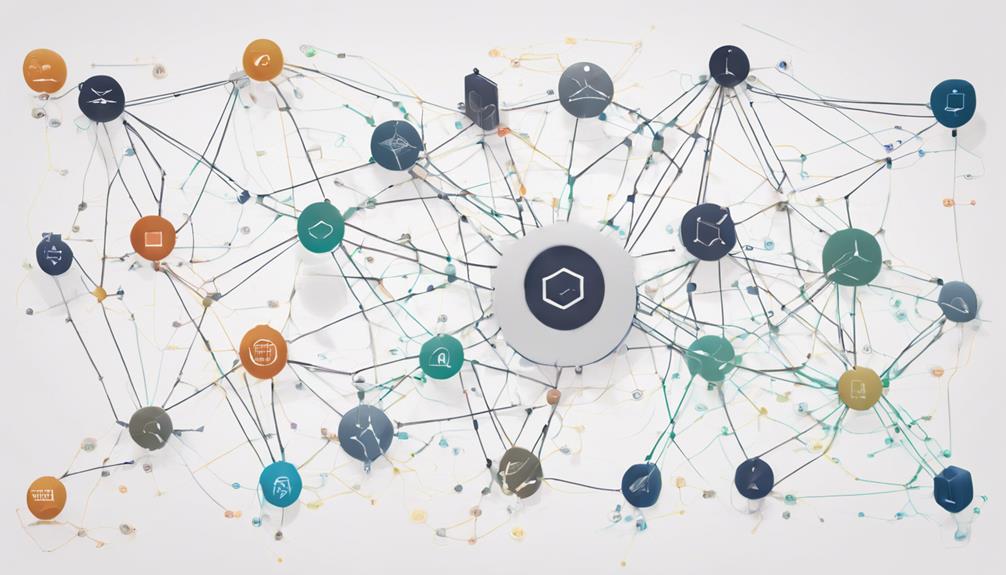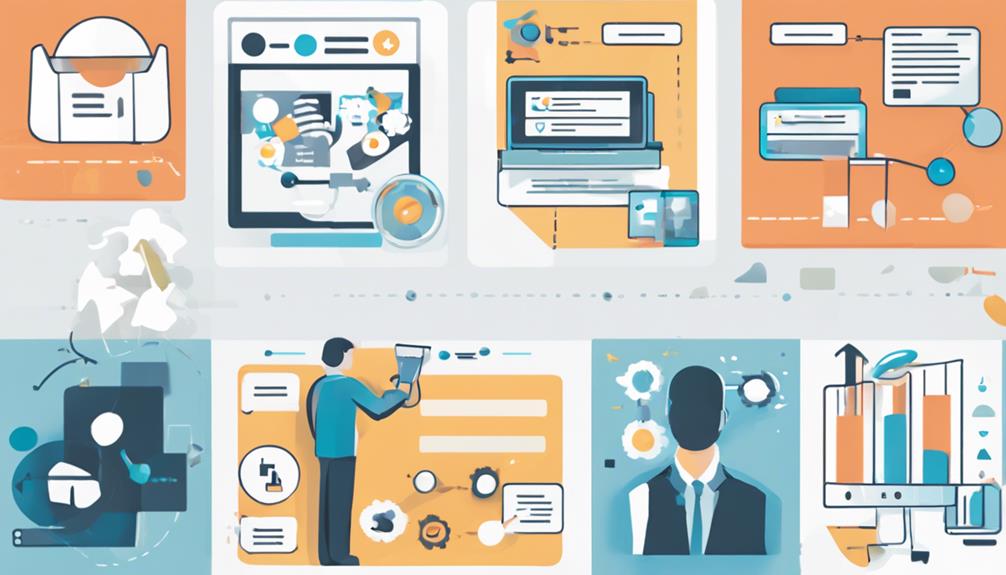When it comes to securing B2B data privacy, did you know that 60% of businesses have experienced a data breach due to a lack of proper security measures in place? Understanding the significance of safeguarding sensitive information is paramount in today’s interconnected digital landscape. By focusing on setting clear objectives, developing a comprehensive strategy, and utilizing advanced security techniques, you can effectively shield your B2B data from potential threats. But how exactly can you ensure your data remains secure in a constantly evolving cybersecurity landscape?
Data Privacy Importance
Data privacy is a critical aspect of B2B operations, ensuring the protection of sensitive information from unauthorized access or misuse. Compliance requirements and risk assessment are key components in safeguarding this data. Meeting compliance requirements involves adhering to laws, regulations, and industry standards regarding data protection. Conducting a thorough risk assessment helps identify vulnerabilities and potential threats to data privacy, allowing for the implementation of appropriate security measures.
Compliance requirements vary depending on the industry and location of the business. It is essential to stay informed about relevant laws such as GDPR, HIPAA, or CCPA, and ensure that data handling practices align with these regulations. Failure to comply can lead to severe consequences, including fines and damage to the company’s reputation.
Risk assessment involves evaluating the likelihood and impact of potential data breaches, considering factors such as the type of data stored, existing security measures, and potential threats. This proactive approach enables businesses to prioritize security efforts and allocate resources effectively to mitigate risks and enhance data privacy.
Setting Goals
When aiming to enhance B2B data privacy, establishing clear and measurable goals is imperative. Goal setting provides a roadmap for your organization to achieve its privacy objectives effectively. Begin by identifying specific targets related to data security, compliance with regulations, and building trust with clients.
Define your privacy objectives in a way that is SMART: Specific, Measurable, Achievable, Relevant, and Time-bound. For instance, a goal could be to implement encryption protocols for all sensitive data within the next six months. This goal is specific in focusing on encryption, measurable by tracking the implementation progress, achievable within the given timeframe, relevant to data security, and time-bound within six months.
Prioritize goals based on their impact on data privacy and the overall security posture of your organization. Consider involving key stakeholders in the goal-setting process to ensure alignment with business objectives. Regularly review and adjust goals as needed to adapt to evolving threats and compliance requirements. By setting clear and actionable goals, you can proactively enhance B2B data privacy and strengthen your organization’s security measures.
Developing a Plan
To effectively enhance B2B data privacy, the next crucial step after setting clear goals is developing a detailed plan. This plan should begin with a thorough risk assessment to identify potential vulnerabilities and threats to your data. Conducting a comprehensive risk assessment will help you prioritize areas that require immediate attention and allocate resources efficiently.
Once risks are identified, the plan should outline a strategic incident response framework. This framework should include detailed procedures for detecting, responding to, and recovering from data breaches or security incidents. It is crucial to establish clear communication channels and designate roles and responsibilities within the incident response team to ensure a swift and effective response to any data privacy incidents.
Implementing Techniques
How can you effectively secure B2B data privacy through implementing techniques that fortify your organizational defenses and safeguard sensitive information? One essential technique is the utilization of encryption methods to protect data both at rest and in transit. By encrypting sensitive information, you can ensure that even if unauthorized access occurs, the data remains unreadable and unusable.
Another crucial technique is implementing robust access controls. By setting up granular permissions and authentication processes, you can restrict access to sensitive data only to authorized personnel. This helps in preventing data breaches and insider threats by ensuring that individuals can only access information necessary for their roles.
Combining encryption methods and access controls fortifies your data privacy measures by creating multiple layers of defense. Encryption secures the data itself, while access controls manage who can interact with it. By implementing these techniques effectively, you can significantly enhance the security of your B2B data and protect your organization from potential risks.
Using Tools and Monitoring
To further strengthen your B2B data privacy measures, utilizing appropriate tools and implementing proactive monitoring strategies is paramount. Encryption software plays a crucial role in safeguarding sensitive data during transmission and storage. By encrypting your B2B communications and files, you can ensure that only authorized parties can access and decipher the information.
Implementing robust access controls is equally vital in maintaining data privacy. By setting up permissions and restrictions based on user roles and responsibilities, you can prevent unauthorized access to critical business information. Regularly reviewing and updating these access controls is essential to adapt to evolving security threats and changes within your organization.
Monitoring tools are essential for detecting any suspicious activities or potential breaches in real-time. By leveraging monitoring solutions, you can proactively identify and address security incidents before they escalate into major data breaches. Automated alerts and notifications can help you stay ahead of potential threats and take immediate action to mitigate risks to your B2B data privacy.
Frequently Asked Questions
How Can Employee Training Enhance B2B Data Privacy?
Enhancing B2B data privacy through employee training involves policy implementation for strict adherence, fostering cyber awareness to recognize threats, and promoting a culture of vigilance. Empower your team with the knowledge to safeguard sensitive information effectively.
What Are the Legal Implications of Data Breaches for B2b?
To address the legal implications of data breaches for B2B, ensure compliance with regulations like GDPR and HIPAA. Failure to do so may result in severe penalties, loss of trust, and financial repercussions due to data breach consequences.
Can Third-Party Vendors Impact B2B Data Privacy?
When considering third-party vendors’ impact on B2B data privacy, remember the importance of vendor vetting. Ensure they align with your privacy policies to safeguard sensitive information. Stay vigilant to mitigate potential risks.
Is Encryption Necessary for B2B Data Protection?
Encryption is crucial for B2B data protection. It ensures data security by converting information into a code that only authorized users can decipher. With encryption, you control access to sensitive data, enhancing security measures alongside access control and data masking.
How Do Emerging Technologies Affect B2B Data Privacy?
When considering how emerging technologies impact B2B data privacy, focus on data encryption to safeguard sensitive information. Implement robust data governance frameworks to ensure compliance and mitigate risks associated with evolving tech trends in the B2B landscape.



